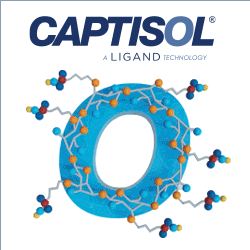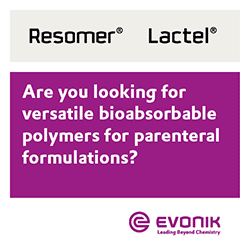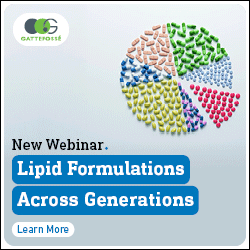WHITEPAPER - OXYCAPT™: Multilayer Plastic Vial: An Optimal Primary Container for Drug Products Transported With Dry Ice

Providing Ideal Protection for Invaluable Drug Products, Including Cell and Gene Therapy Products
Product Introduction of OXYCAPT™
OXYCAPT™ is a multilayer plastic vial and syringe, consisting of three layers made from two types of resins. The drug contact layer and the outer layer are made of cyclo-olefin polymer (COP), which offers high transparency, low risk of extractables and low adsorption. In addition, the middle layer is made of MGC’s novel polyester. OXYCAPT™ offers many advantageous properties, including:
- Excellent oxygen and carbon dioxide barrier
- Ultraviolet (UV) light barrier
- Strong water vapour barrier
- Very low extractables
- High pH stability
- Low protein adsorption and aggregation
- High transparency
- High break resistance
- Easy disposability
- Lightweight

Figure 1. Structure of OXYCAPT™
The properties of OXYCAPT™ make it applicable to a wide range of formulations, particularly those sensitive to oxygen or light, as well as formulations transported and stored at ultra-low temperatures. It effectively protects against issues such as degradation, breakage of vial, and loss of container closure integrity. In this paper, we highlight the potential risks associated with low-temperature transportation, introduce specific risks while dry ice transportation, and demonstrate the usefulness of OXYCAPT™ in addressing these risks.
Benefits of OXYCAPT™ in Deep Cold Supply Chain
State-of-the-art drug products, including mRNA-based drugs, cell therapy products, and gene therapy products, are typically transported and stored at extremely low temperatures, such as -78℃ with dry ice or below -180℃ in the gas phase of liquid nitrogen. At these temperatures, risks such as vial breakage and loss of container closure integrity (CCI) may occur1,2. To address these issues with glass vials, plastic vials are increasingly being used. Plastic vials are generally tougher at deep-cold temperatures than glass, significantly reducing the risk of breakage during transport and under thermal stress. For example, in a heat cycle test conducted to evaluate resistance to physical stresses such as material shrinkage and expansion or the volumetric expansion of liquid drugs, OXYCAPT™ vials demonstrated excellent performance. We filled 8 mL of a 10 w/v% mannitol aqueous solution into 20 OXYCAPT™ vials and 20 conventional glass vials, sealed them with rubber stoppers, and alternately placed them in constant temperature chambers set to -80°C and 40°C. Each cycle involved storing the vials at -80°C and 40°C for either 3 or 4 consecutive days. This process of alternating between -80°C and 40°C was repeated for a total of 5 cycles. As a result, all 20 glass vials were found to be broken by the end of the fifth cycle, whereas the 20 OXYCAPT™ vials showed no visible defects such as cracks or layer separation (Table 2).

Table 1. Heat cycle test results showing the total number of breakages and layer separations over 5 repetitive heat cycles
Moreover, plastic vials tend to maintain CCI at low temperatures due to the smaller difference in the thermal expansion coefficient between the vial flange and its closure system. We conducted a container closure integrity test using OXYCAPT™ vials to simulate the conditions under which cell therapy products are transported and stored in the vapor phase of liquid nitrogen. In this study, OXYCAPT™ vials and conventional glass vials were prepared, sealed under ambient air with non-laminated rubber stoppers and aluminum caps, and the initial oxygen concentration was measured using an oxygen headspace analyzer. The vials were then stored in the vapor phase of liquid nitrogen within a dry shipper filled with liquid nitrogen at the base for up to 3 months. During storage, we periodically measured the oxygen concentration inside the vials to confirm whether it remained at approximately 20.9%. As a result, all of the conventional glass vials lost container closure integrity within 7 days, whereas the OXYCAPT™ vials maintained container closure integrity even after 3 months. These findings demonstrate that OXYCAPT™ vials can effectively prevent the ingress of air, moisture, and contaminants, even under ultralow temperatures of -180°C.

Figure 2. CCI test results showing ΔO2 [%] in headspaces of OXYCAPT™ and conventional Type I grass vials stored at -180℃
New Aspect of Potential Risk in Transportation with Dry Ice: Carbon Dioxide Permeation
While conventional plastic vials offer potential advantages, they do not resolve all issues and may even introduce new risks. Conventional plastic containers may pose a specific risk: carbon dioxide permeation when dry ice is used. CO2 can dissolve in aqueous solutions, generating hydrogen ions that lead to pH shifts in drug products and potential degradation.
To demonstrate the potential risk of CO2 permeation and highlight OXYCAPT™ benefits, we conducted a CCI test with dry ice as followed in Figure 3. Five 10R OXYCAPT™ vials and five conventional COP vials were used as samples. The vials were placed in an insulated box filled with dry ice and stored for 7 days. Afterward, CO2 partial pressure in the vial headspaces was measured immediately after removal at the timing of T0 by using FMS-CO2, a headspace analyzer made by LIGHTHOUSE Instruments. Subsequently, the vials were additionally stored at 5℃ or 23℃ under ambient conditions, with periodic CO2 pressure measurements.

Figure 3. Test procedure of the CCI Test MGC conducted
As seen in Figure 4-a, no CO2 was detected in the headspaces of both COP and OXYCAPT™ vials immediately after removal from the box (T0), indicating excellent container closure integrity at -78°C. However, when subsequently stored at 23°C for a day, COP vials showed CO2 pressure of approximate 1.5 Torr (Figure 4-b). This phenomenon was unavoidable when the COP vials were stored at 5℃. In contrast, OXYCAPT™ vials maintained CO2 level of 0% over the period of 70 days even though the OXYCAPT™ were continuously stored at 23℃(Figure 4-c).
In scenarios where pharmaceuticals transported with dry ice are delivered to consumers, such as medical institutions, and thawed or temporarily refrigerated at 2-8°C before use, exposure to low or room temperatures may lead to the permeation of dissolved CO2. This poses a risk of undesired pH changes in drug products. To mitigate this “time-delayed” CO2 permeation phenomenon, secondary packaging is sometimes necessary. However, secondary packaging introduces potential concerns, such as the risk of damage to the packaging, increased material costs, and the need for packaging validation. Given these concerns, OXYCAPT™, which ensures gas barrier properties in the primary container itself, is considered the optimal solution when it comes to its gas barrier property, cost savings and eco-friendliness.

Figure 4-a. CO2 concentration in OXYCAPT™ and COP at the measurement point T0

Figure 4-b. CO2 concentration in OXYCAPT™ and COP at the measurement point T1

Figure 4-c. The mean change in CO2 partial pressure within 10R vial headspaces from the beginning of additional storage at either 5°C or 23°C.
Conclusion
OXYCAPT™ vial is the multilayer primary container with the distinctive structure that includes the gas barrier layer in the middle layer. They offer optimal features for the transport and storage of advanced therapeutics, such as cell and gene therapy products. This vial maintains excellent container closure integrity even under ultralow temperatures like -80℃ or -180℃ and exhibits excellent resistance to breakage, making it particularly valuable for mitigating risks associated with cold-chain logistics. Additionally, it provides superior barrier properties against carbon dioxide permeation, a newly recognized risk for plastic vials during transportation with dry ice, thereby protecting the contents effectively. As a result, it serves as an optimal container that offers a comprehensive solution to meet a wide range of requirements.
About The Author
Hiroki Hasegawa is a researcher of Advanced Business Development Division. He gained a Diploma in Science in 2013 and a Master Degree of Science in 2015 from Osaka University. Since April 2015 he has been working for Mitsubishi Gas Chemical Company, Inc. and in charge of macromolecular science, especially in composition development of thermosetting resin. Since 2018 he has joined a development team of multilayer plastic vial & syringe for biologics.
Mitsubishi Gas Chemical (MGC) is a leading company in the field of special polymers with oxygen absorbing and barrier functions. In 2019, MGC launched new products named OXYCAPT™ Multilayer Plastic Vial having high oxygen, carbon dioxide and ultraviolet barrier. Since then, a lot of biologics and cell & gene therapy companies have started their evaluations, and we have heard positive results from them.
For more information, visit https://www.mgc.co.jp/eng/products/abd/oxycapt.html
*MGC received Packaging Innovation Award at Pharmapack in January 2025: https://www.mgc.co.jp/eng/corporate/news/2025/250124e.html
References
- Alexander Sperry, et al. A Case Study Demonstrating the Importance of Glass Vial Selection for Parenteral Pharmaceutical Products, Journal of Pharmaceutical Sciences, Volume 113, Issue 9,2024:2974-2980
- Yusuf O Oni , et al. Container Closure Integrity of Vial Primary Packaging Systems under Frozen Storage Conditions: A Case Study, PDA Journal of Pharmaceutical Science and Technology January 2023, 77 (1) 45-52
Total Page Views: 10478











